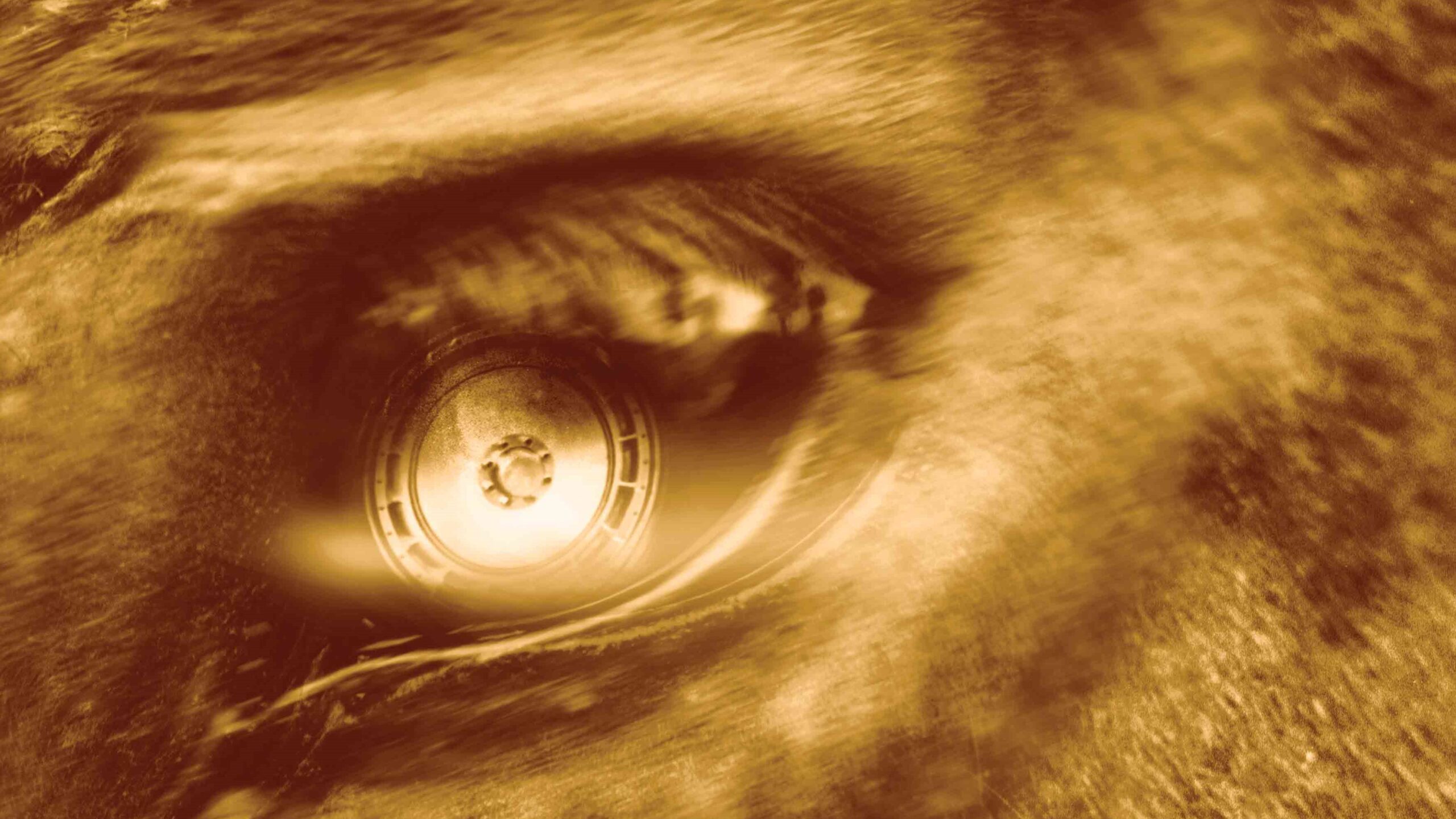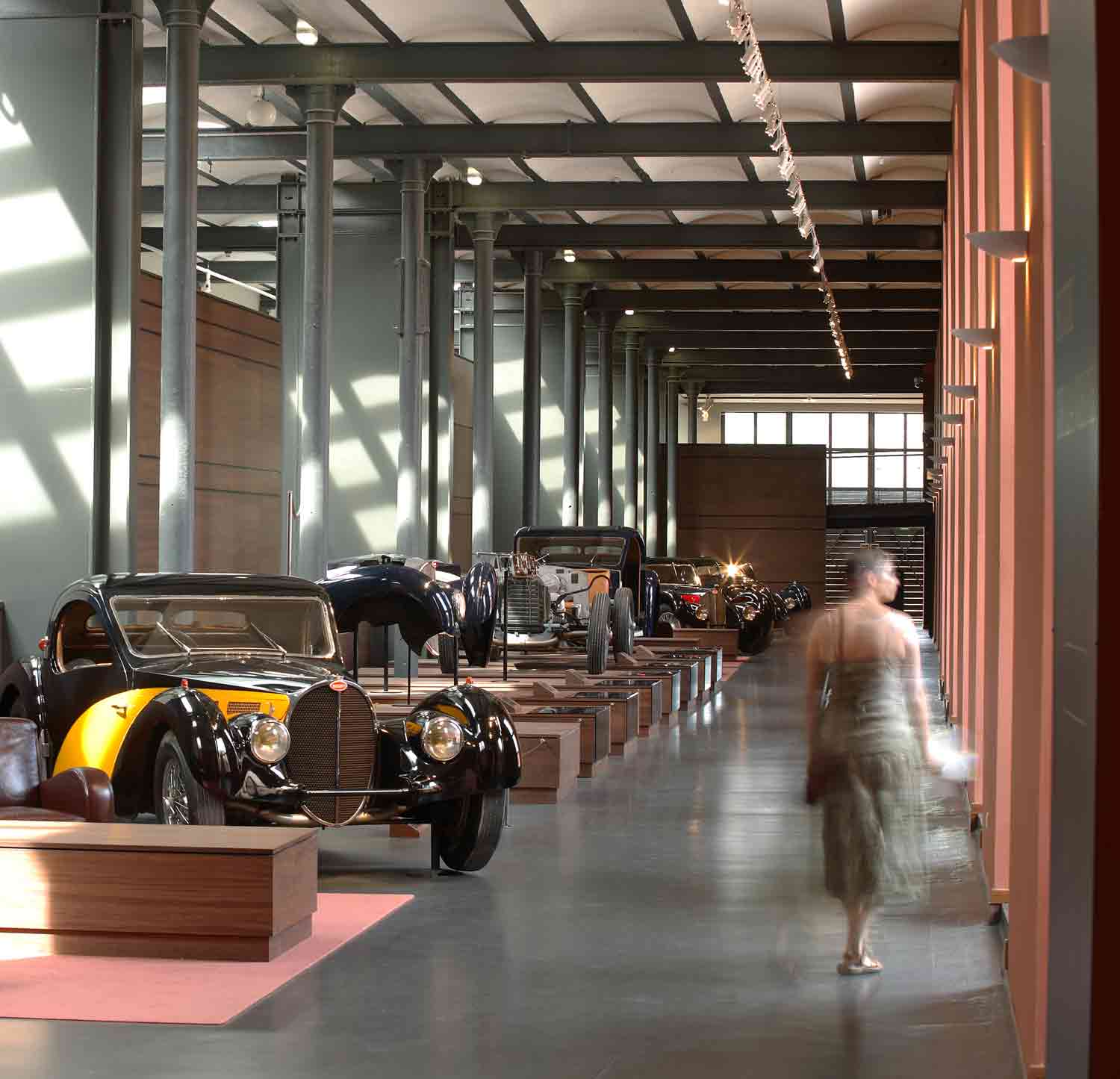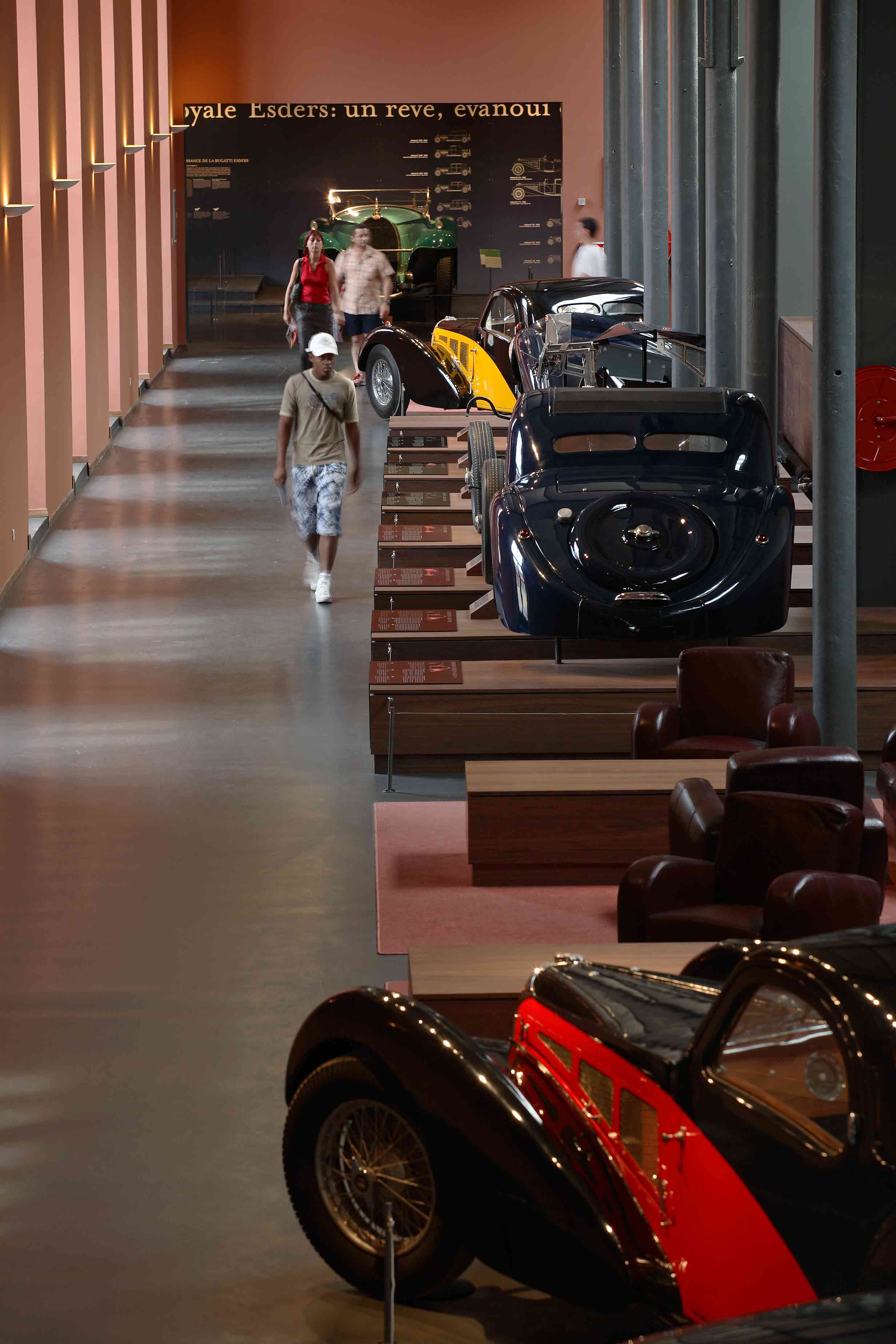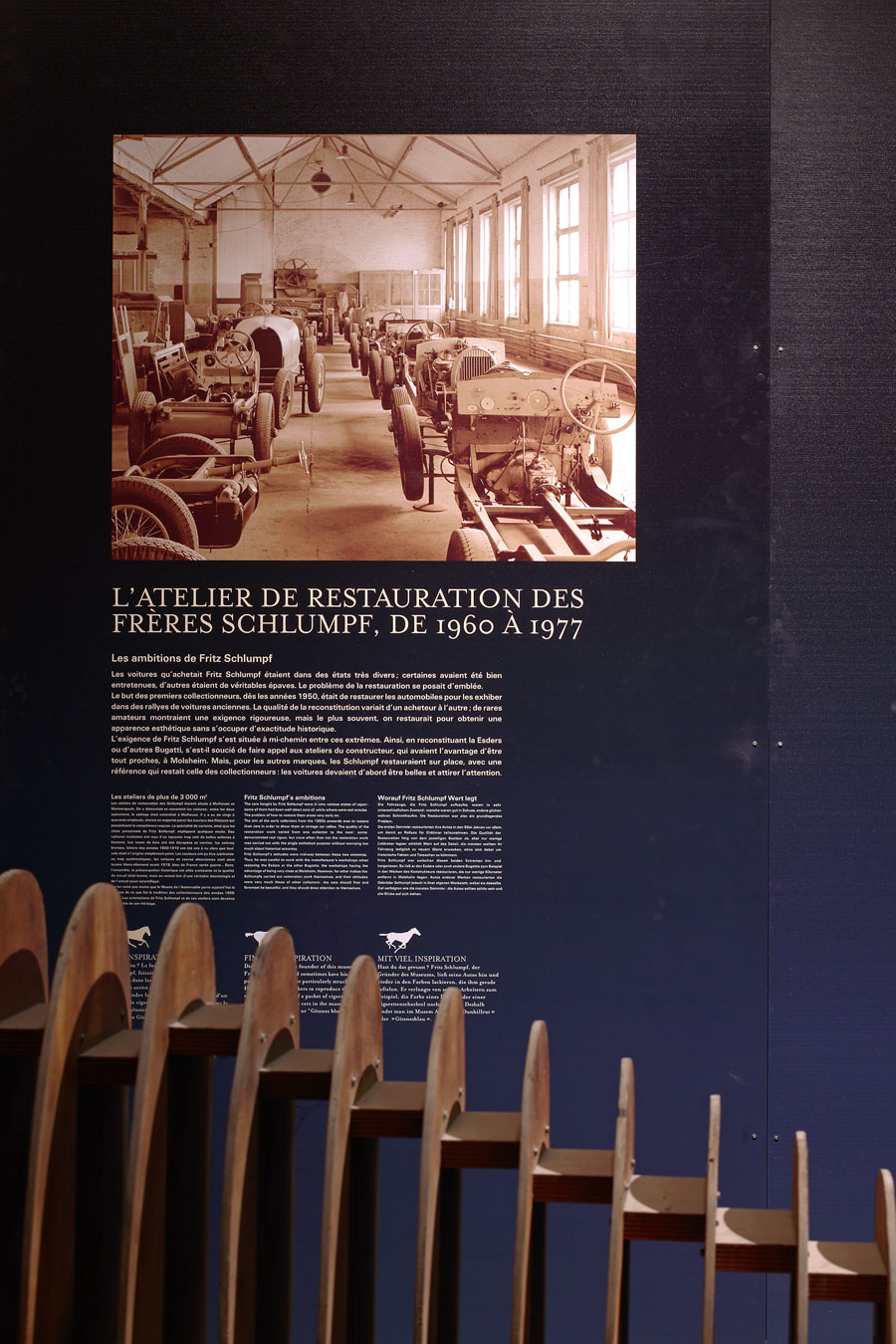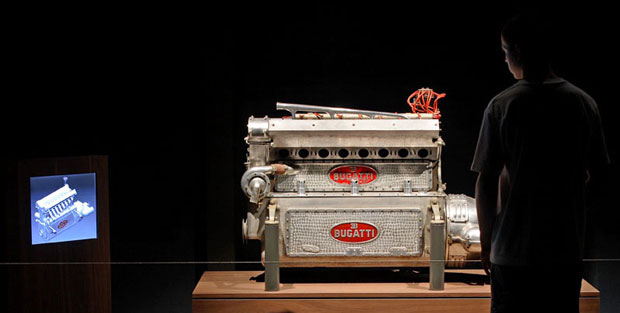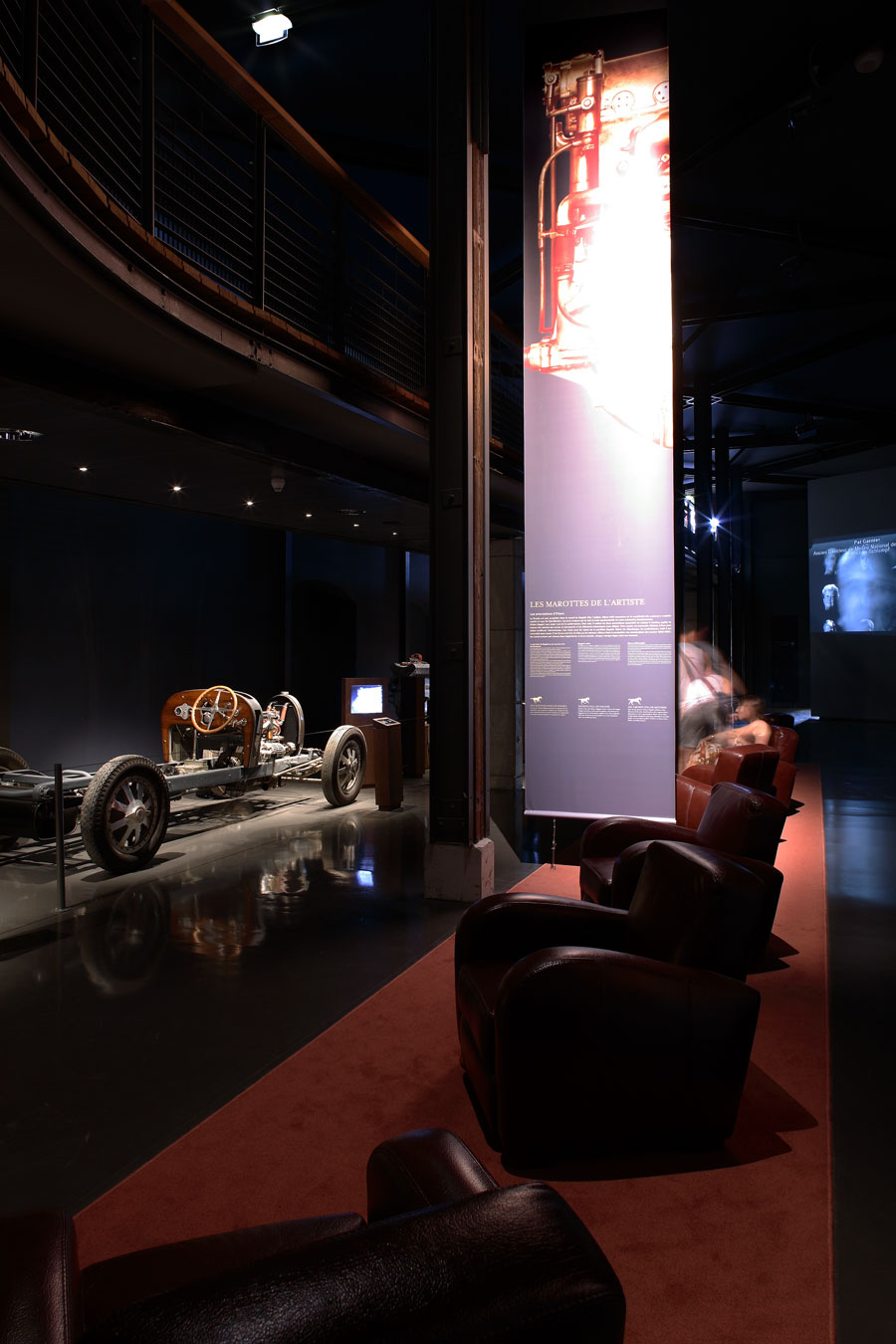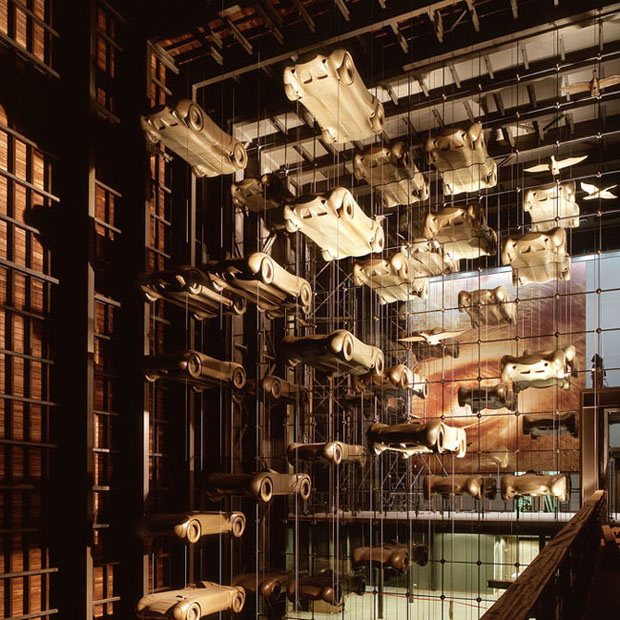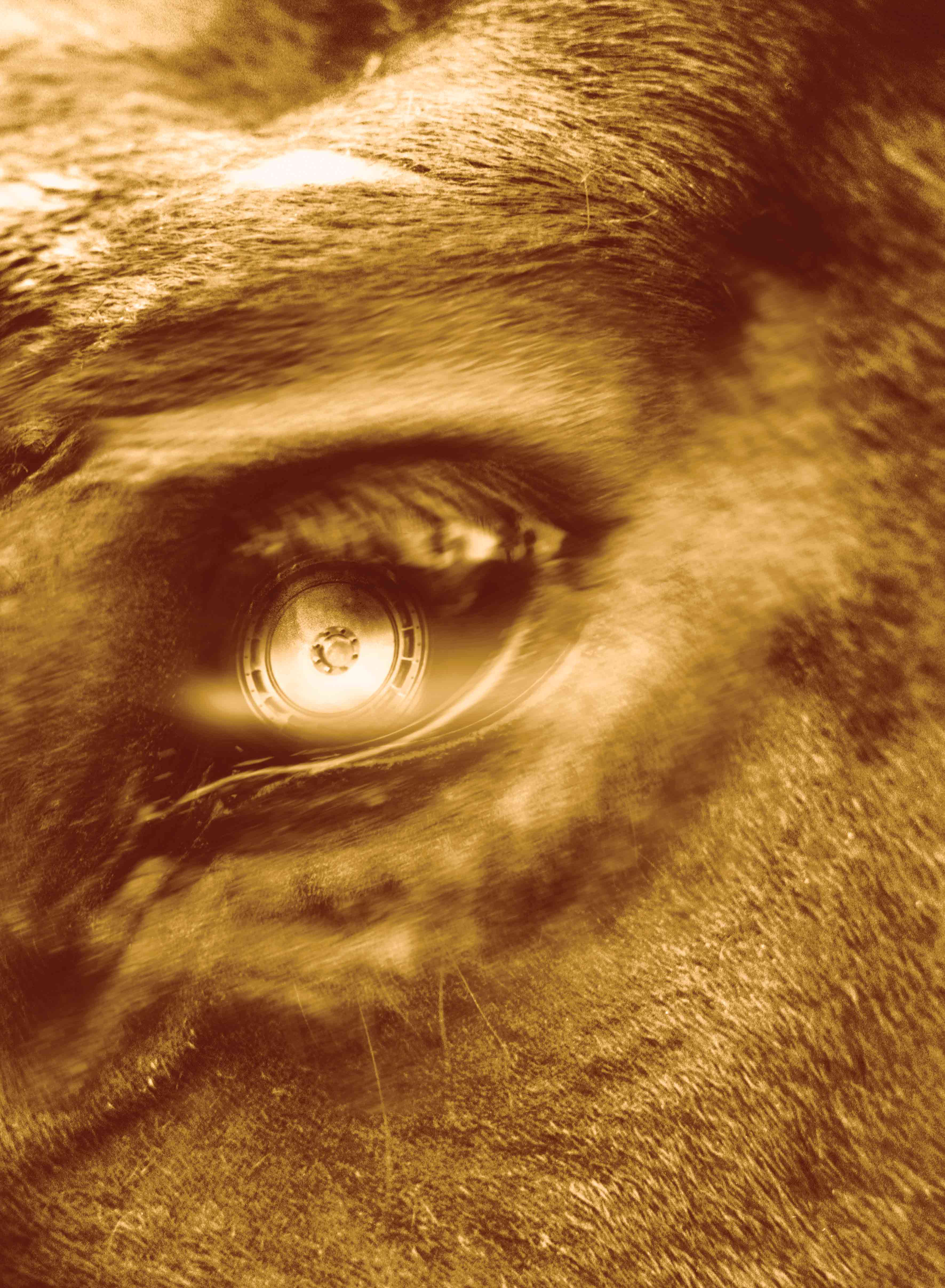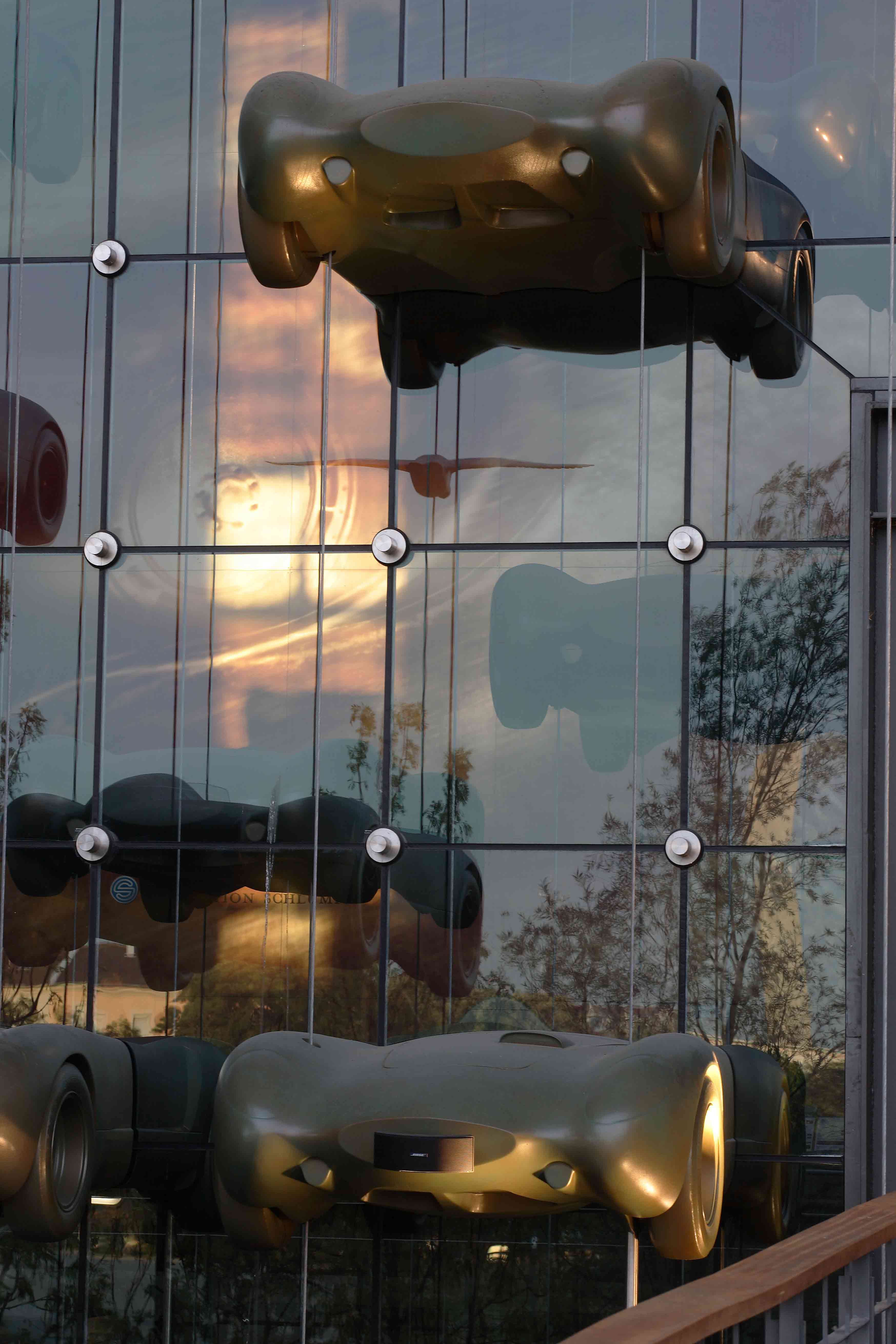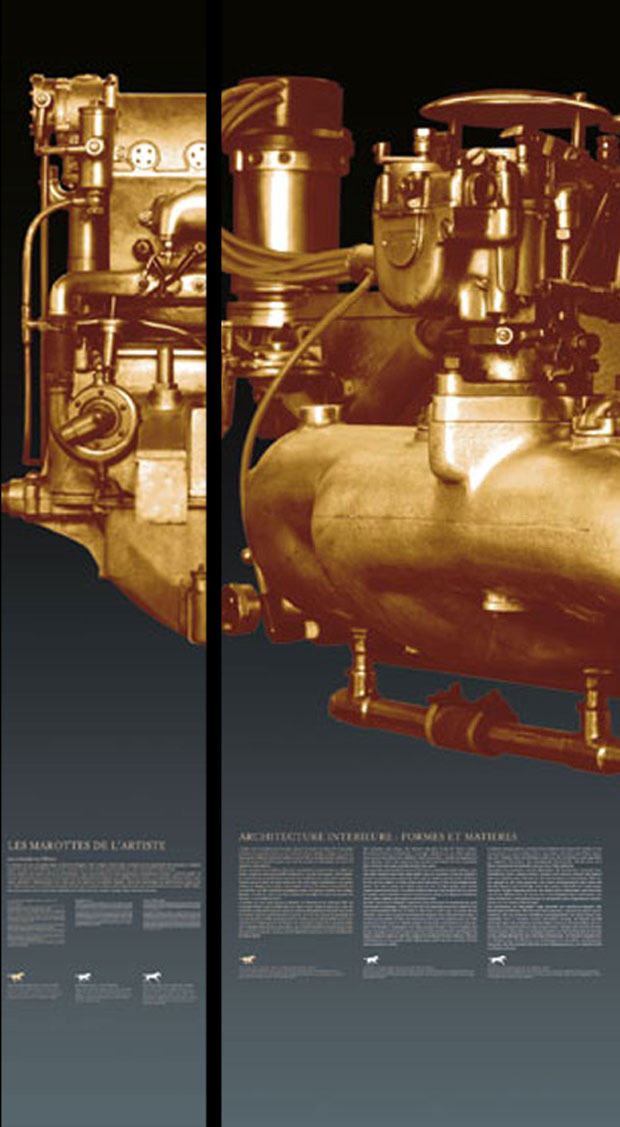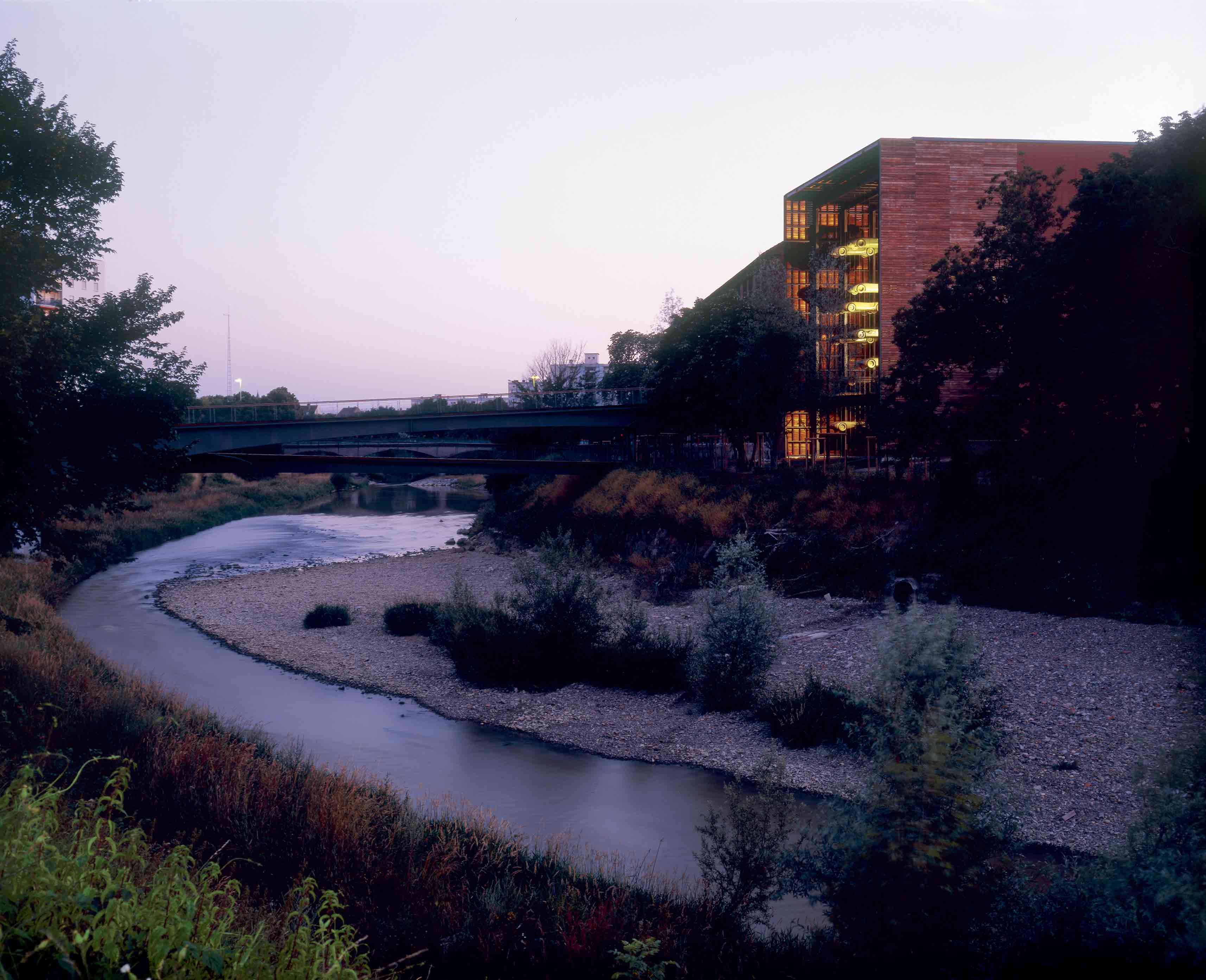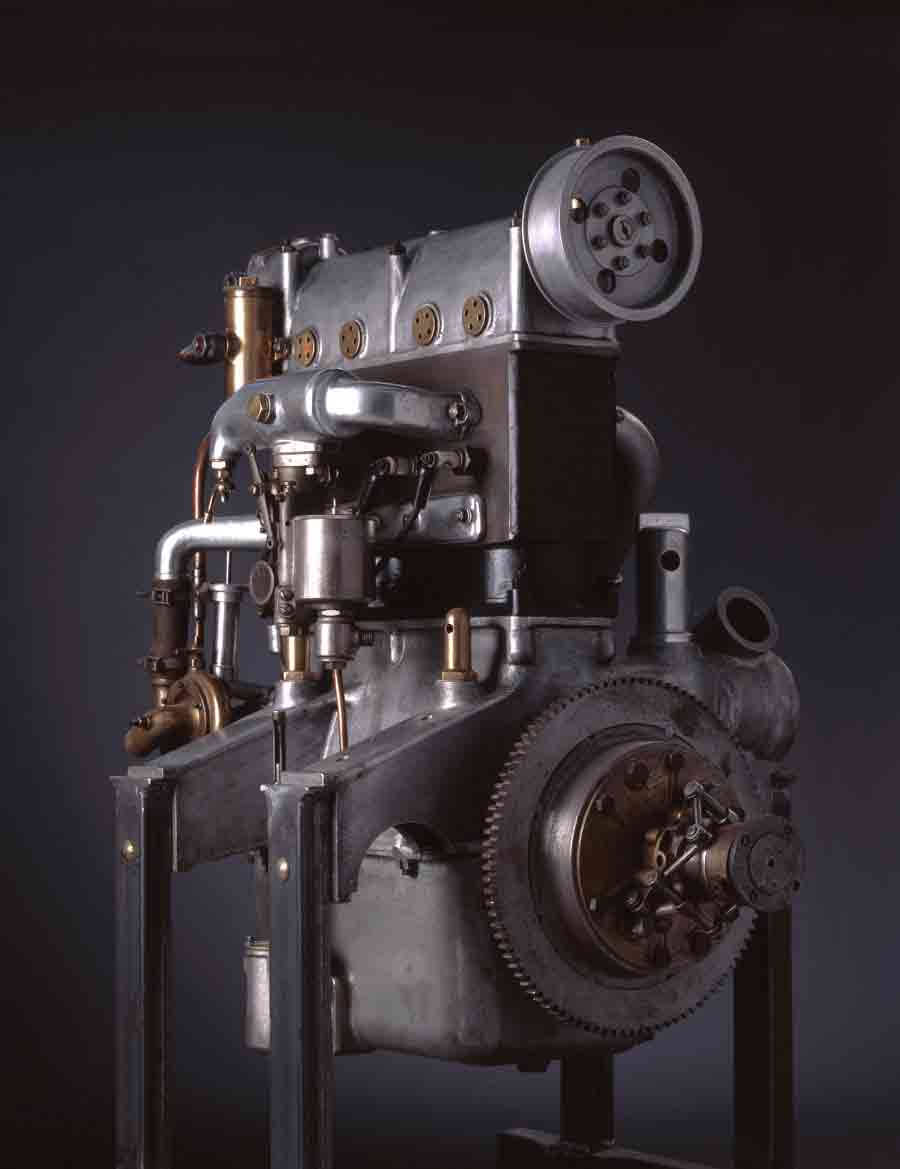
Mulhouse Automobile Museum – Exhibition Design, Mulhouse, France
Architects
Jean-François Milou, principal architect
Thomas Rouyrre, project leader
Shinobu Takaso, project team member
Client
Association de gestion du Musée de l’automobile
Area
30,000 m2
Budget
23,000,000 €
Consultancy Service scope
Preliminary & Detailed Design, Interior
Design, Exhibition Design, Contract
Administration / Construction
Bidding mode
1st Prize in Competition
Contract period
2002-2010
Implementation
2002-2010
Design of exhibition areas
Design for the entrance to the museum:
Arriving in the museum car park, the visitor is immediately struck by the size of the building’s entrance and by its “cars in flight”. Having noted these, he or she takes the bridge and advances towards the entrance area, the “surreal” character of this collection of cars becoming stronger and more present to the senses in doing so.
Seen from the outside, this design evokes the “mania of production”, the “racing against nature”, which is a part of the car industry, and it features an improbable collection of cars and animals suspended in space against a background design evoking the design of cars. This is complemented by a system of hanging sounds, like a great “industrial harp”, in which natural, atmospheric and industrial sounds are mixed.
Design for exhibitions in the former wool store:
This area is a former storage space, and it acts as a transitional space between the entrance area and the museum proper. Lit by artificial light, the area is crossed by a bridge overlooking the last exhibition area of the visit. From the entrance area the bridge leads rapidly into an animated environment of sounds coming from the lower level (motor noise and movement). A panorama of images projected on the wall evokes the ways in which traditional customs (marriage, birth and various festivals) have been changed by the advent of the automobile, and how road construction has changed perceptions of the countryside. Coming back, the visitor sees the same area as before, but now from the opposite direction.
Work on the visual identity of the new exhibition spaces
The visitor begins with a dual image of horse and car, car and horse. On the road, driving along in a car perhaps, one’s eye is drawn to a spectacular, enigmatic façade featuring a shower of cars falling, motionless, within a large frame set in space. In fact, these both are and are not cars. While they have the form, the curves, and the dimensions of cars, they nevertheless glitter in the sunlight, looking as if they have multiplied under glass, like a shower of pieces of gold. These cars signal the entrance to the Automobile Museum, and the visitor has probably already been stopped short by it….However, in the middle of the golden cars there hangs a horse, and behind them there is a giant eye, an animal eye, with a strange, visionless look. This is also a horse’s eye, or perhaps it is the eye of a fool who nevertheless always asks questions that no one knows how to answer. This eye both is and remains the mystery of this museum: it is an eye that stays silent, watching people come and go in beautiful cars that perhaps control them more than they control their cars. We can begin here, which is already a good start.We have conquered our freedom, a freedom that everything encourages us to claim. Now the project follows.
The message of the collection
The National Automobile Museum wants to be at once a museum of the civilization of the automobile and the greatest collection of Bugatti cars in the world today. Since it is through the juxtaposition of these two aspects that the museum will create its particular identity, the emphasis of the exhibition should lie in confronting the following question: What is the message of the Bugatti collection for us today, after a century’s development of the civilization of the automobile? The answer we have given to this question can be stated as follows: «Coming from a period before the separation of art from engineering, the Bugatti collection remains for the general public today the lost paradise of modernity.» This «lost paradise» contains elements from suburban workshops and futuristic fantasies, as well as from the creative explosion that took place in Europe at the beginning of the 20th century….It is the vocation of the Mulhouse museum to present this profusion of creativity, setting it against its presentation of the socio-economic features of today’s automobile civilization.
Exhibition Design

